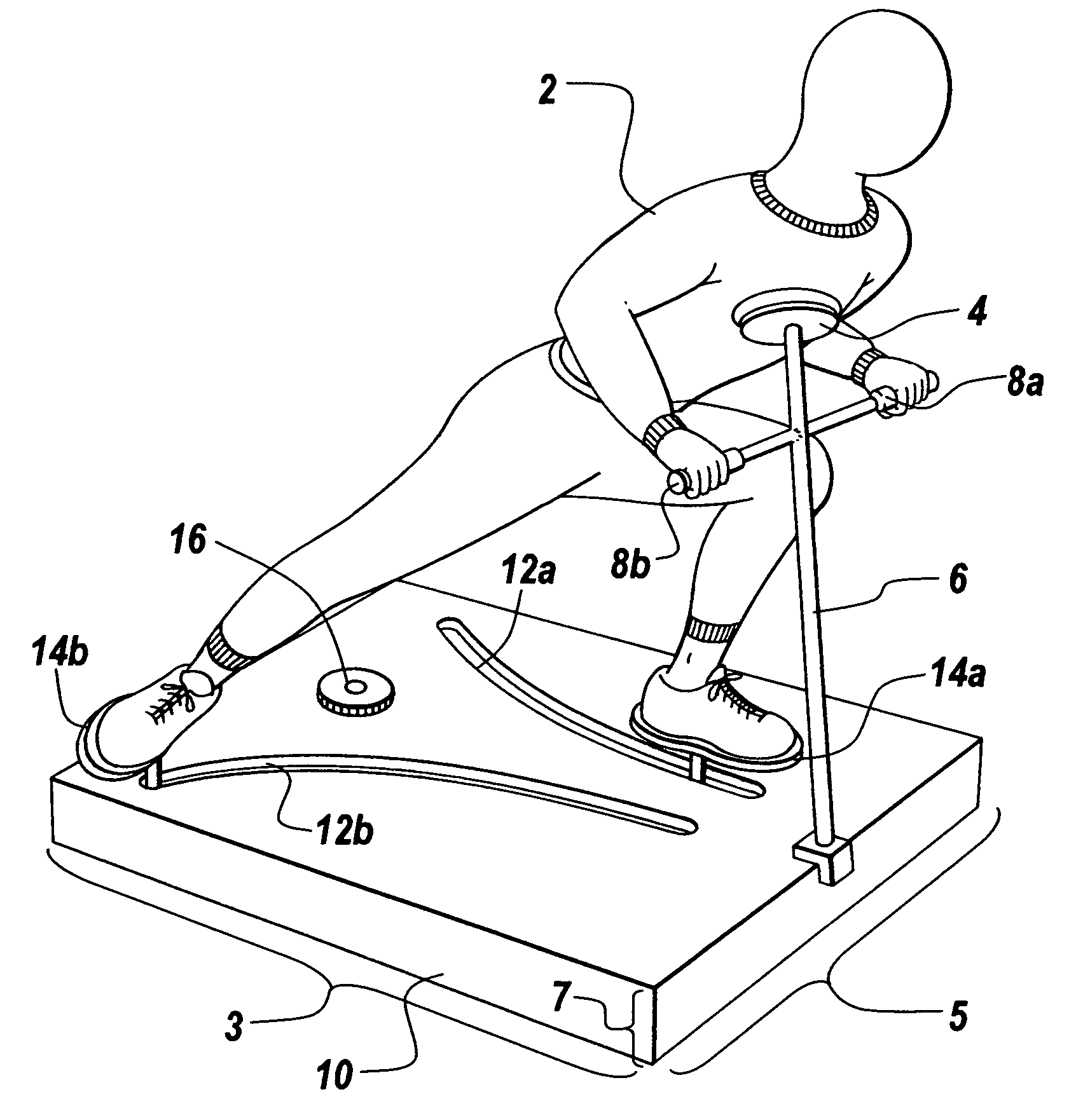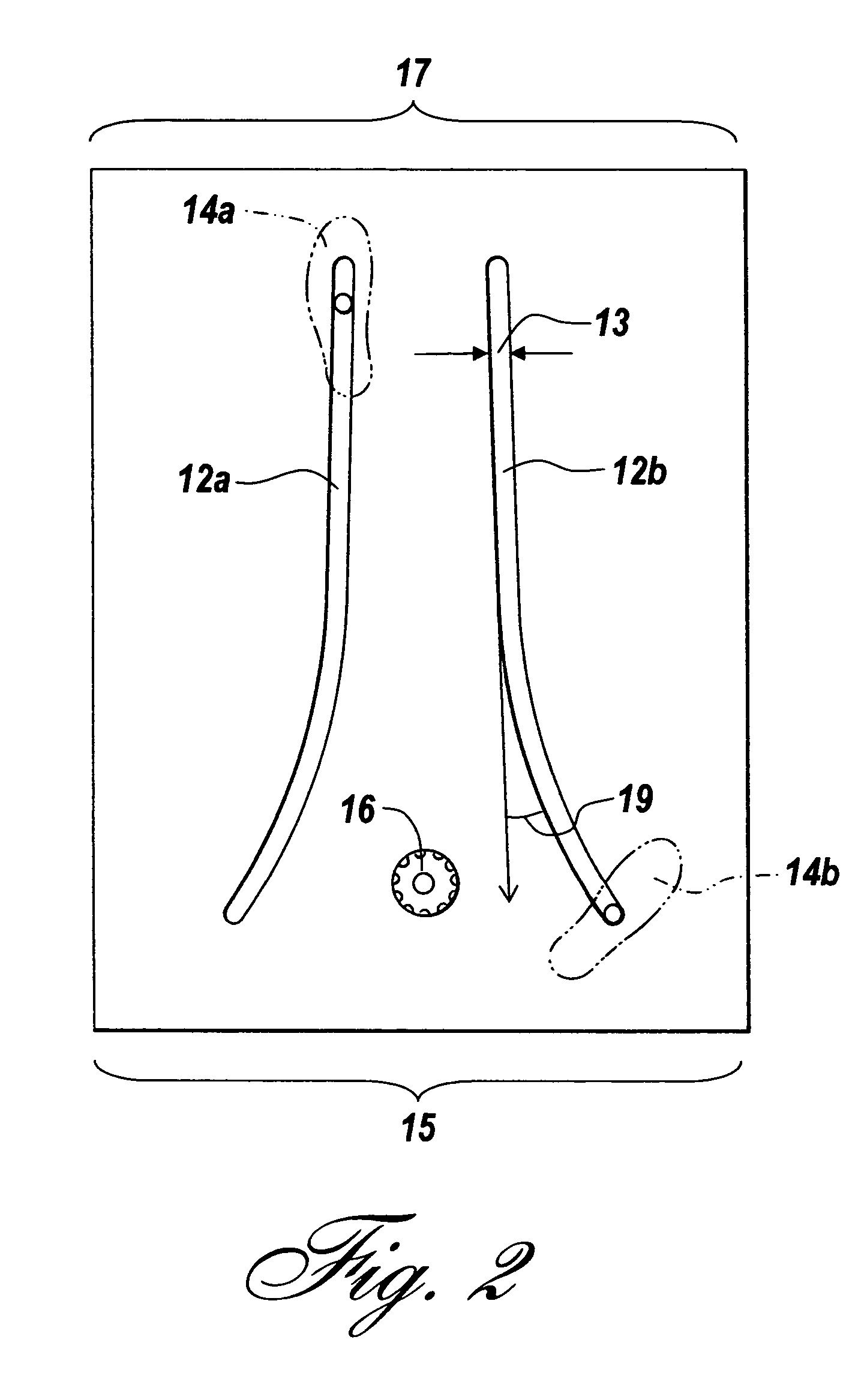Ice skating training apparatus for playing hockey
a training apparatus and hockey technology, applied in the field of exercise equipment, can solve the problems of limited rotation around the vertical axis, poor suited to provide toning and exercise the remaining leg muscles, and conventional skate training devices
- Summary
- Abstract
- Description
- Claims
- Application Information
AI Technical Summary
Benefits of technology
Problems solved by technology
Method used
Image
Examples
Embodiment Construction
[0036]FIG. 1 illustrates an exercise apparatus adapted to provide a user (2) with an exercise workout which simulates an athlete's movement when ice skating. The apparatus is shown as a free standing unit and includes a horizontal platform (10), defined curvature stride paths (12a, 12b), respective pedal assemblies for the right and left feet (14a, 14b), a variable resistance mechanism (16), a handle assembly (8a, 8b) and a chest support (4).
Horizontal Platform:
[0037]The horizontal platform of the present invention can be constructed in varying dimensions and of a number of materials. The primary purpose of the horizontal platform is to provide vertical support and areas of space for placement the defined curvature stride paths and movement of the respective pedal assemblies. Consequently, the dimensions of the platform must allow for defined curvature stride paths with lengths at least as long as the length of a user's extended leg. In a preferred embodiment of the present inventio...
PUM
| Property | Measurement | Unit |
|---|---|---|
| width | aaaaa | aaaaa |
| length | aaaaa | aaaaa |
| width | aaaaa | aaaaa |
Abstract
Description
Claims
Application Information
 Login to View More
Login to View More - R&D
- Intellectual Property
- Life Sciences
- Materials
- Tech Scout
- Unparalleled Data Quality
- Higher Quality Content
- 60% Fewer Hallucinations
Browse by: Latest US Patents, China's latest patents, Technical Efficacy Thesaurus, Application Domain, Technology Topic, Popular Technical Reports.
© 2025 PatSnap. All rights reserved.Legal|Privacy policy|Modern Slavery Act Transparency Statement|Sitemap|About US| Contact US: help@patsnap.com



